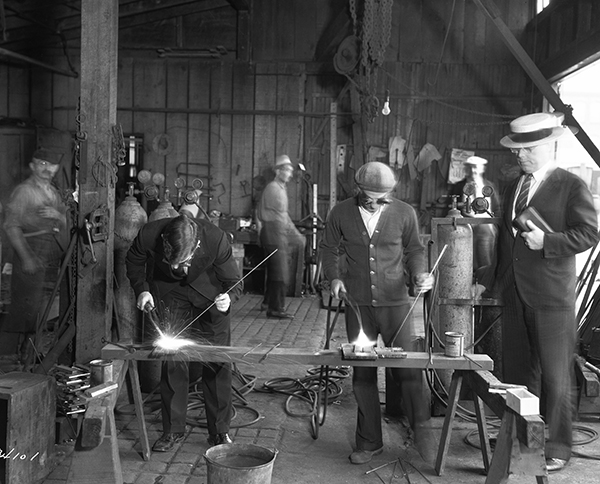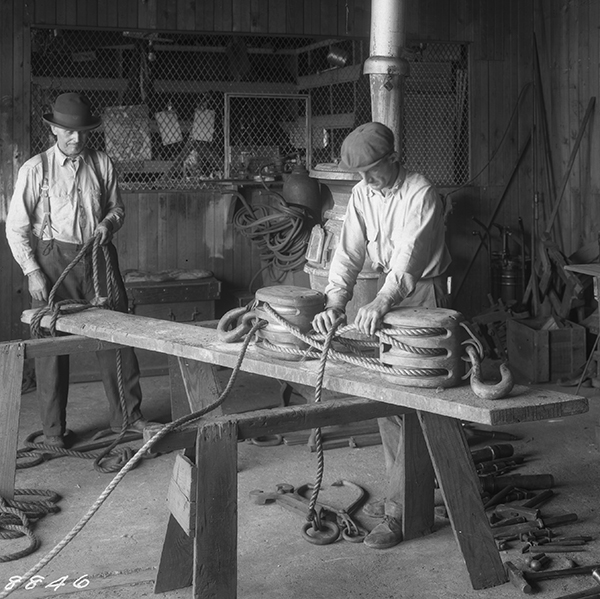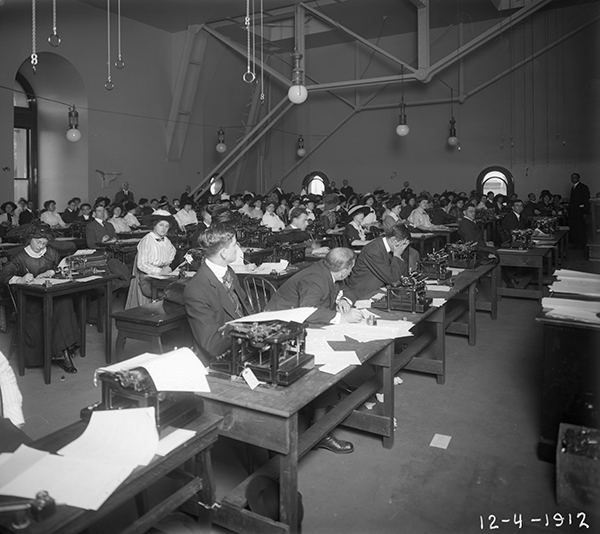According to the first annual report of the City’s Civil Service Commission, Philadelphia received more than 4,500 applications more than 170 different types of positions in 1906. Twenty seven job-seekers applied to be bricklayers, 84 hoped to be hired as carpenters, 692 as clerks, 68 as elevator operators, 37 as engineers, 50 as firemen, 2 as guards at the House of Correction, 156 as guides at City Hall. Twenty three hoped to become drain inspectors, 10 as masonry inspectors, 11 as meat inspectors, 116 as street cleaning inspectors, 54 as janitors, 27 as “janitresses,” 90 as machinists, 364 as patrolmen, 131 as mounted patrolmen, 11 as photographers, 18 as plumbers, 23 as plumbers helpers, 112 as stenographers, 12 as telegraph operators, 48 as telephone operators, 9 as tinsmiths, 14 as waitresses, and 180 as watchmen. That same year the Commission held civil service examinations for 3,801 candidates. More than 2,200 were “placed on eligible lists.”

By the 1920s, Philadelphia’s employment rolls made it the single largest employer with as many as 30,000 in 663 positions as diverse as, Walter Licht tells us, ambulance chauffeur, clock attendant, herdsman, traffic statistician, and writ server.”
“By the 1950s this process had ballooned” still further, according to Licht. In 1953 alone the city processed 48,775 applications, arranged for 34,215 civil service tests, notified the 10,479 who passed of their eligibility, and appointed 4,543 to actual jobs.

In many cases, especially for office jobs, the civil service exams were in a written format, but when it came to the trades like stenography, welding or ironwork, among others, the Commission devised and administered practical exams.
In October 1905, Frank M. Riter, the head of the Commission, personally tested eight applicants hoping to be hired as waitresses at the Philadelphia Hospital (presumably the Philadelphia General Hospital). According to The Inquirer, Riter displayed his own “startling knowledge of the science of waiting” as he posed questions.

“What is the meaning of ‘draw one,’ ‘brown the wheat,’ ‘off the ice,’ ‘one in the dark,’ ‘wheat bread devil’ and ‘plate the flannel?”
“What is the proper way to shoot a plate of biscuits?”
“How many oysters should be in a small stew? How many in a large stew?”
“If a customer orders four sinkers, at three for five cents, a cup of coffee, without milk and a plate of ‘ham and,’ what should be the amount of his check?”
In 2021, we have no idea. But we do know sinkers were doughnuts and “ham and” was, and in some quarters still is, slang for ham and eggs. The rest, especially plated flannel, remains a mystery.
Not for long, one hopes.
[Sources: Walter Licht, Getting Work: Philadelphia, 1840-1950, (University of Pennsylvania Press, 1992)]; “First Annual Report of the Civil Service Commission of the City of Philadelphia, January 2, 1907” in Annual Message of the Mayor of the City of Philadelphia with the Annual Reports of Directors of Departments, vol. 1 (Philadelphia, 1907): Riter, the Versatile, Plays Head Waiter, The Philadelphia Inquirer, October 18, 1905.]

2 replies on “Ordering “Plated Flannel” for the Civil Service”
Red Flannel Hash is hash potatoes with beets! Plenty of modern references but plenty of historical ones on Archive or google books. My favorite title of the moment is Left-overs Made Palatable: How to cook odds and ends of food into appetizing dishes.
I’d say “draw one”=one cup of coffee.